
views
X
Research source
Depending on the size and material of your castanets, the sound of this timeless instrument can vary widely, but no matter if you're playing for fun in your free time or adding some zest to your dance routine, with a few techniques you'll soon be able to use castanets in style .
Wearing and Adjusting Your Castanets
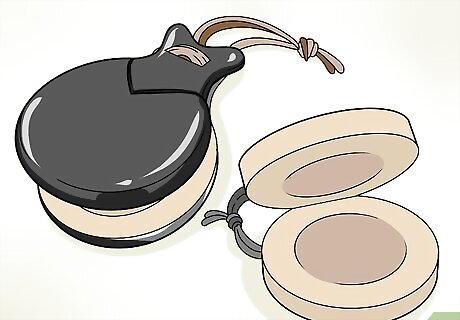
Choose the right size castanets. This is largely a matter of preference, as the string connecting the shells of your castanets are adjustable. The size of your castanets will also influence the tone you create. Generally, you'll want a pair that fit comfortably in your hand and can be hidden easily from view in your palm. Sizes range from three, which is usually for children or to achieve high pitches, up to nine for larger hands and deeper tones.
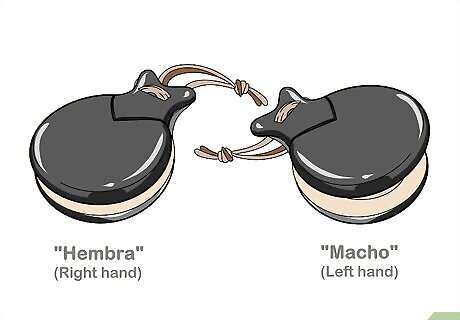
Determine handedness for each castanet. Each castanet is made of two shells tied together with the hollow side of each shall facing inward. One set will have a higher pitch; this is your "hembra" (which means female in Spanish) castanet and is worn on your right hand. Your other castanet will have a lower pitch; this is the "macho" (meaning male in Spanish) and will be worn on your left hand. Many times there will be a marking, like a small letter R, on the hembra (right) pair of castanets.
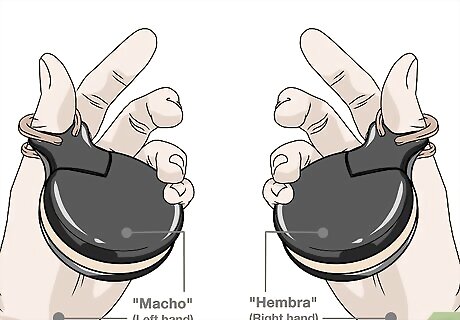
Put on your castanets. Now that you've determined the hembra (right) castanet from the macho (left) one, take the string connecting the shells of your hembra castanet pull it so two loops emerge from either end of the castanet. Then put your thumb through both loops, being sure that for both hands the loops of your castanets: Rest on either side of your knuckle. Run along the bottom of your thumbnail and base of your thumb. The knot of the string is on the bottom loop and faces toward your body.
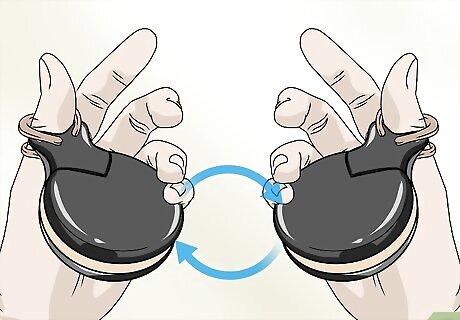
Swap sides with your castanets if left handed. Since the melody and the majority of the complex rhythms are going to be in your right hand, left handers might have an easier time playing if they wear the macho (left) castanet on their right hand. However, many left handers still play right handed, as this is the traditional way of playing castanets and makes group instruction, where the traditional way is most frequently used, easier.
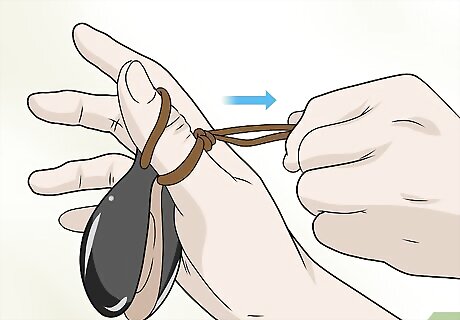
Test the tightness of your castanets. If your castanets are too loose, the sound you create won't be bright or clear. Additionally, loose castanets can fall off while performing or practicing, so you may want to start with your castanets tight, tap your fingers on the shells to check tone, and then loosen your knots as needed. Adjust the length of your castanet string by sliding the knot tighter or looser. Aim for a string length that feels stable, comfortable, and snug.
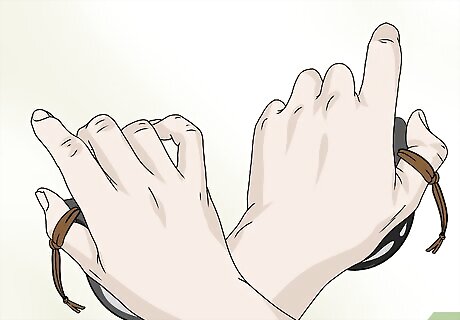
Hide your castanets in your hands. Castanets are often coupled with dance, like in zambra flamenco dancing. Showing your castanets to the audience while performing a dance can detract from the aesthetic, where the trills and clacks of the castanets appear linked with the motions of the dance.

Choose mounted castanets for orchestral performances. Professional percussionists in an orchestra often have to coordinate many instruments at once, and to save time during a performance taking castanets on and off, performers might make use of mounted castanets. These can be bought at some music stores, and can also be found through online retailers.
Playing the Castanets
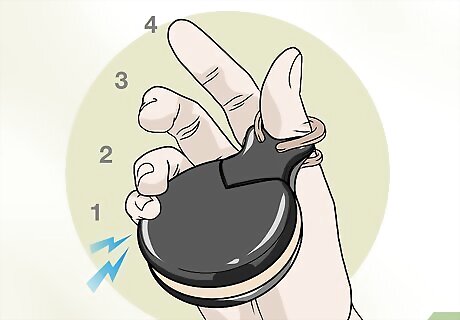
Practice a simple roll in the right hand. Start with your pinkie finger and tap the top of your castanet. Then follow your pinkie with your ring finger, and do the same for the rest of your fingers until you reach your pointer finger.This is a simple castanet roll in your hembra (right) castanet. This sound is sometimes called "RRI" by castanet teachers.
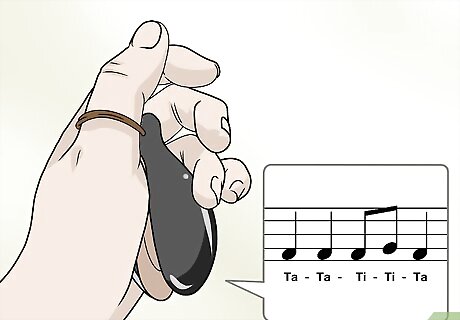
Add rhythm with your left hand. Your macho (left) castanet will punctuate the bassline of your castanet sound, creating the rhythm. Use your middle finger and ring finger to tap your macho castanet at the end of every right hand roll. This will create a slightly heavier, deeper toned rhythm. This sound is sometimes referred to by experts as "TA".
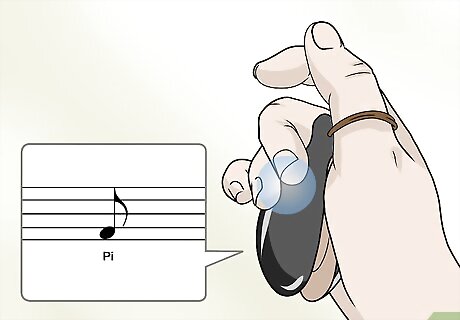
Create the "PI" sound in your right hand. This move will be nearly identical to your approach to making the "TA" sound, only instead of using your left hand, you'll use the ring and middle fingers of your right hand to make the sound. Alternate between this and your roll to acquaint yourself with the different sensations.
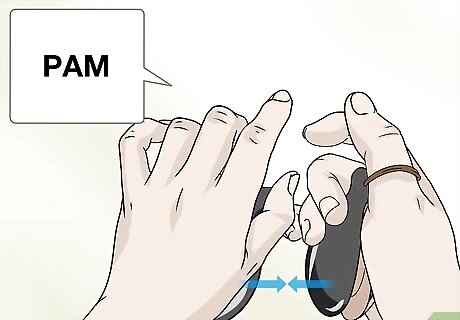
Drill the "PAM" sound using both castanets. This sound is also sometimes referred to as "CHIN", for its clashing quality. This sound requires you to collide the castanets together while they are in front of your body. While each pair of castanets are unique, semi-professional castanets and higher quality pairs are built to withstand this strike. Perform this move sharply.

Learn the finishing sound "PAN". This powerful sounding clap is often used to end a sequence, as it has a tone of finality to it. Use your pinkie, ring, and middle fingers to strike both castanets at the same time. Be sure you strike your castanets at the same time, otherwise the powerful effect will be staggered and weak.
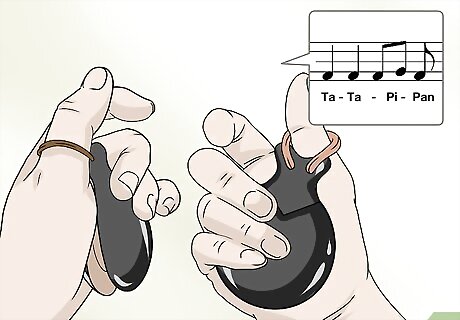
Practice different strikes in different patterns. While it is generally true that the complicated rhythms of the melody should remain in your hembra (right) castanet, you should experiment with different finger strikes used in different patterns. Alternate between trills and bassline "TA" strikes, clap back and forth with "TA" and "PI", then finish strong with "PAN".

Use mounted castanets for orchestral performances. Mounted castanets are played with the hand, drumstick, or mallet. The castanets are attached to a piece of wood and connected in such a way that leaves space for the castanets to come together to make noise. Shake mounted castanets back and forth in smooth, regular motions to create clicking/clapping sound. Ricochet the clapper between your knee and hand for a fast roll. Use drumsticks on the castanets to further sculpt the sound.



















Comments
0 comment